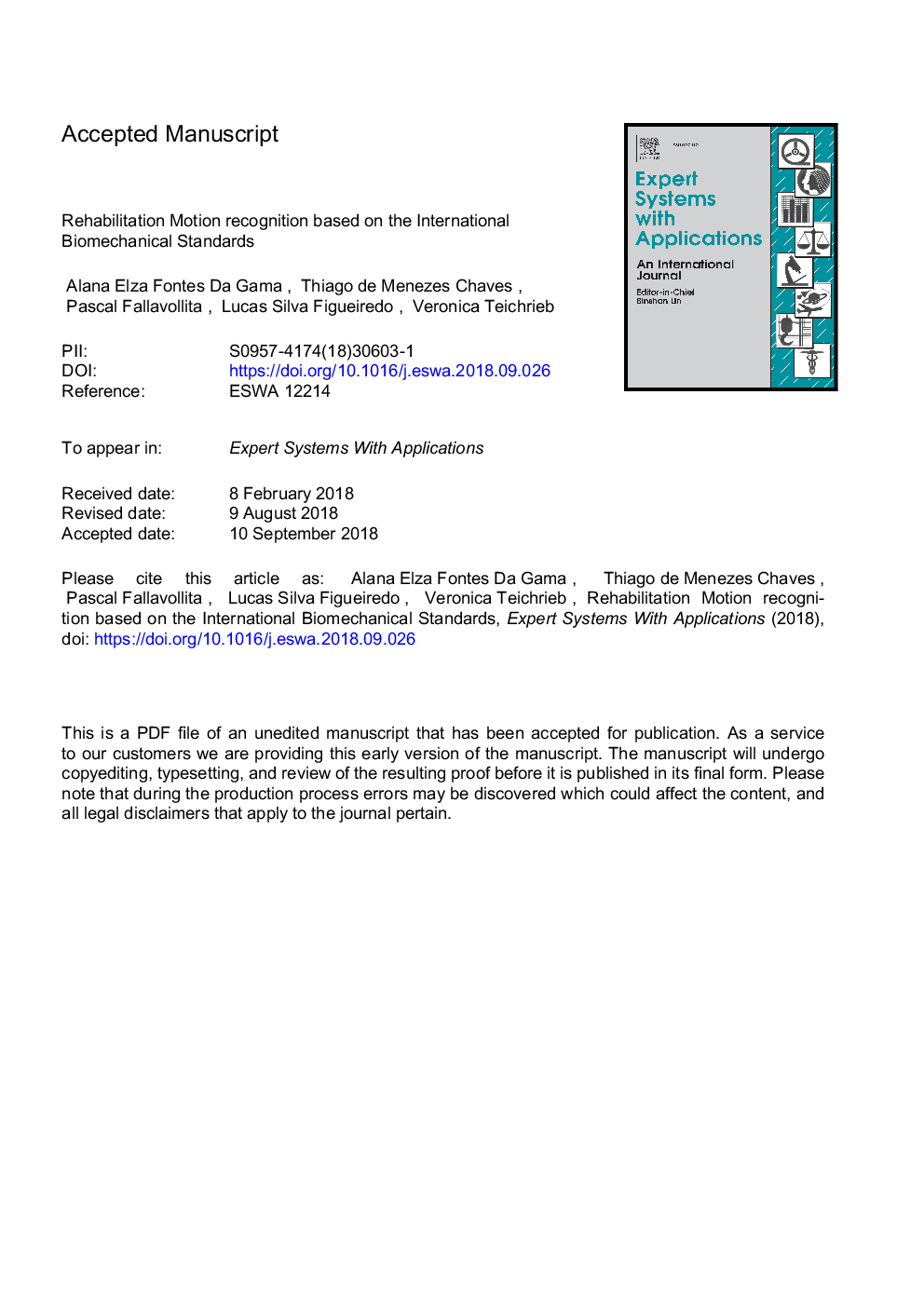| کد مقاله | کد نشریه | سال انتشار | مقاله انگلیسی | نسخه تمام متن |
|---|---|---|---|---|
| 11028863 | 1646701 | 2019 | 30 صفحه PDF | دانلود رایگان |
عنوان انگلیسی مقاله ISI
Rehabilitation motion recognition based on the international biomechanical standards
ترجمه فارسی عنوان
تشخیص حرکت توانبخشی بر اساس استانداردهای بیومکانیک بین المللی است
دانلود مقاله + سفارش ترجمه
دانلود مقاله ISI انگلیسی
رایگان برای ایرانیان
کلمات کلیدی
توانبخشی، تجزیه و تحلیل جنبش، بیومکانیک، کینکت تعامل انسان و کامپیوتر،
موضوعات مرتبط
مهندسی و علوم پایه
مهندسی کامپیوتر
هوش مصنوعی
چکیده انگلیسی
Since 1990, the International Society of Biomechanics (ISB) has made efforts to provide uniformity to motion description. However, the majority of user studies and technological systems that use motion recognition for rehabilitation, such as virtual and augmented reality (VR and AR), do not follows this standard. Typically, VR and AR techniques recognize motion by comparing human joint positions to a pre-recorded movement, direction, or position relative to an interactive object. Aiming to fill a lack of biomechanical reference on joint motion recognition and analysis for rehabilitation interactive systems, this paper proposes a movement description and recognition method following the ISB standard. The developed method aims to provide computational solutions which are clinically relevant and that uses clinical jargon known to the rehabilitation therapists. The proposed method will also allow motion analysis independent of user's height or its position relative to sensor. We conclude this paper by presenting a comparative analysis of the effectiveness of the Kinect sensors (versions 1 & 2) regarding the recognition of patient exercise motions related to the biomechanical standard. Our solution consists of biomechanical motion classification by identifying in which 3D plane the motion occurs. The motion recognition solution also provides patient posture, motion, and information about incorrect exercise performance. The method was developed by first implementing a body representation and Joint Coordinate System based on ISB standard and then motion angle and biomechanical classifications were performed. Specific methods to measure axial rotations were developed inspired by the traditional goniometry strategy. Also, experiments to evaluate if the method is able to classify the biomechanical motions and, thus, detect whether or not they are being performed correctly were performed using both Kinect v1 and Kinect v2. Motions were performed in correctly and wrongly to also verify false positives. Each classified motion was performed 100 times: 70 correct repetitions (35 at normal speed and 35 fast ones) and 30 wrong ones (out of their respective plane). The motion recognition method showed good efficacy in classifying the biomechanical motions correctly. Most of motions presented great success rate of recognition . higher than 80%, mainly using a 20 degrees tolerance.
ناشر
Database: Elsevier - ScienceDirect (ساینس دایرکت)
Journal: Expert Systems with Applications - Volume 116, February 2019, Pages 396-409
Journal: Expert Systems with Applications - Volume 116, February 2019, Pages 396-409
نویسندگان
Alana Elza Fontes Da Gama, Thiago de Menezes Chaves, Pascal Fallavollita, Lucas Silva Figueiredo, Veronica Teichrieb,
